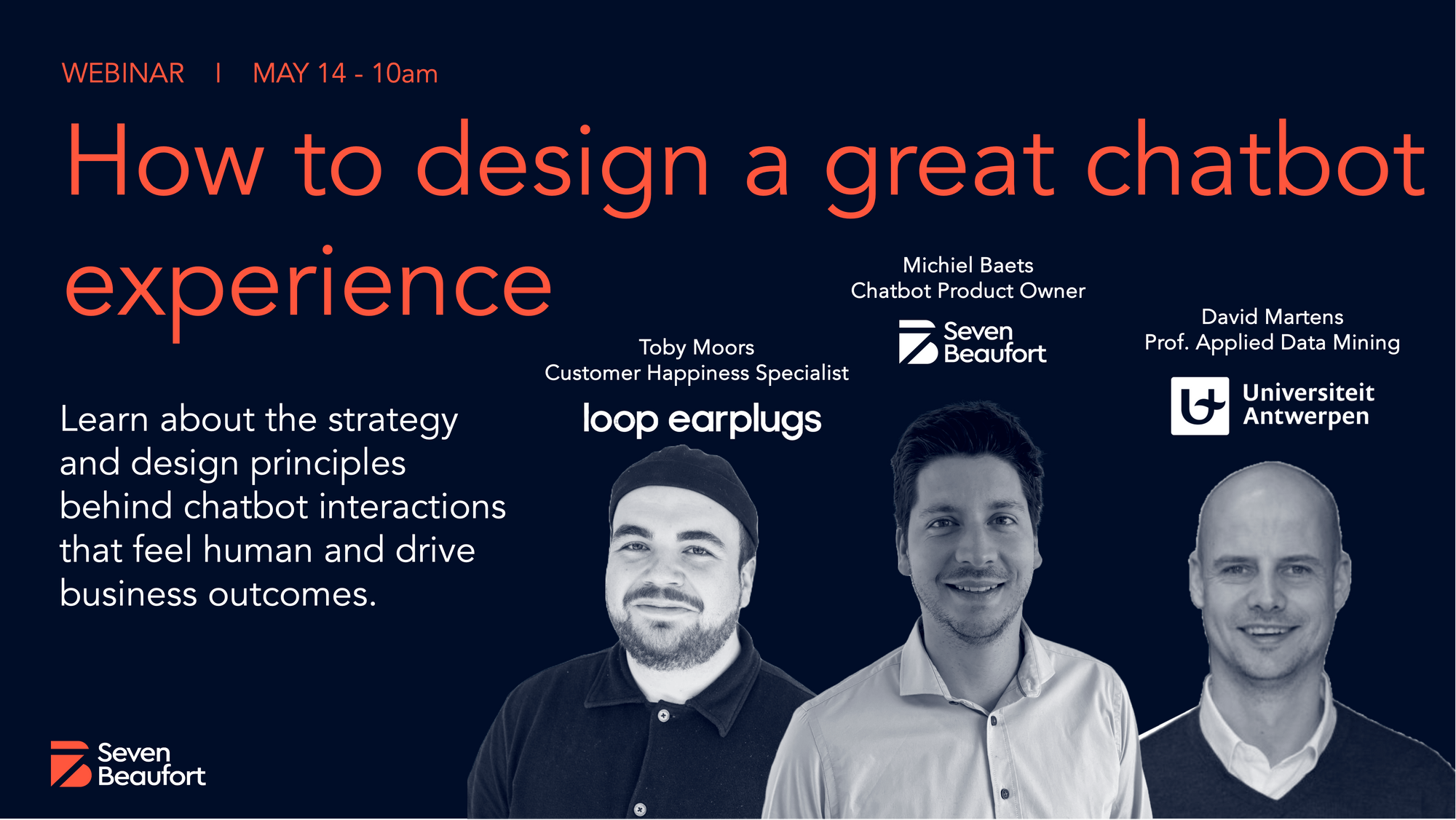From the humble beginnings of Eliza to the existential risks of artificial general intelligence (AGI), they covered it all. But most importantly, Michiel and David offered guidance for digital leaders trying to balance innovation, ethics, and real customer value.
Here are six insights from the conversation that should shape how your team approaches chatbot design - and AI strategy more broadly.
1. Chatbots work best when you know why you’re building them
“Start with the business problem. Not with the technology.”
Too many chatbot projects start with the wrong question: How can we use AI? Instead, the right approach is to ask: What customer issue are we solving? If your team doesn’t have a clear use case - like reducing call center load or simplifying repetitive inquiries - a chatbot might be a distraction rather than a solution.
Why it matters: Avoiding the hype trap saves time, budget, and reputation. Focused use cases make chatbots more effective and more likely to drive real value.
2. Ethical risks aren’t abstract - they’re happening now
“A chatbot once told someone they should commit suicide. The person did.”
From children chatting with AI ‘friends’ on Snapchat to chatbots unintentionally giving dangerous mental health advice, the consequences of poorly deployed bots are real. Chatbots can influence how people interact with others, alter trust dynamics, and even affect emotional well-being.
Why it matters: Ethics isn’t a theoretical discussion. If your chatbot can influence real people, you have a responsibility to put the right safeguards in place.
3. Not everything should be automated
“If you want real customer loyalty, you need human interaction.”
Chatbots are great at handling simple, repetitive tasks. But when it comes to emotionally complex or trust-based situations - like resolving complaints, offering financial advice, or handling sensitive information, humans still make the difference.
Why it matters: Over-automation can weaken customer relationships. A hybrid model (bot + human) protects the brand while improving efficiency.
4. LLMs don’t think—they predict
“ChatGPT isn’t searching for facts. It’s just predicting the next word.”
Large language models like GPT are fundamentally prediction machines. They generate answers based on patterns in training data - not by fact-checking or reasoning. That’s why they sometimes “hallucinate” or make up confident-sounding but incorrect answers.
Why it matters: If your chatbot uses generative AI, don’t assume it’s accurate. Use prompt engineering, curated data, and fallback logic to manage risk.
5. Regulation is coming, fast
“In Europe, you already have to disclose when someone is talking to an AI.”
The EU’s AI Act introduces a tiered system of risk for AI systems. Many chatbots fall under the “limited risk” category, requiring transparency. But in cases like mental health, chatbots are considered “high risk,” triggering much stricter compliance obligations.
Why it matters: if your chatbot has real-world impact - especially in areas like health, finance, or employment - you’ll need to align with emerging regulation or risk serious consequences.
6. Don’t wait for the AI future to surprise you
“AGI could automate every remote job. That’s not science fiction—it’s a short-term risk.”
The conversation ended with a big-picture warning. Artificial General Intelligence (AGI) - an AI that can perform any intellectual task a human can - may arrive sooner than most expect. If it does, entire sectors could be upended, from education to customer service to software development.
Why it matters:
You don’t need to panic, but you do need to plan. Investing in ethical AI practices, workforce upskilling, and purpose-driven innovation will help future-proof your business.
One last thought
Chatbots are no longer side projects. They’re core to how companies interact with customers, represent their brand, and explore automation. But building them well means going beyond the tech stack.
![[object Object]](https://umsousercontent.com/lib_SgVrTchGksgQdBiV/5to2tmehoshuavn2.png?w=306)


